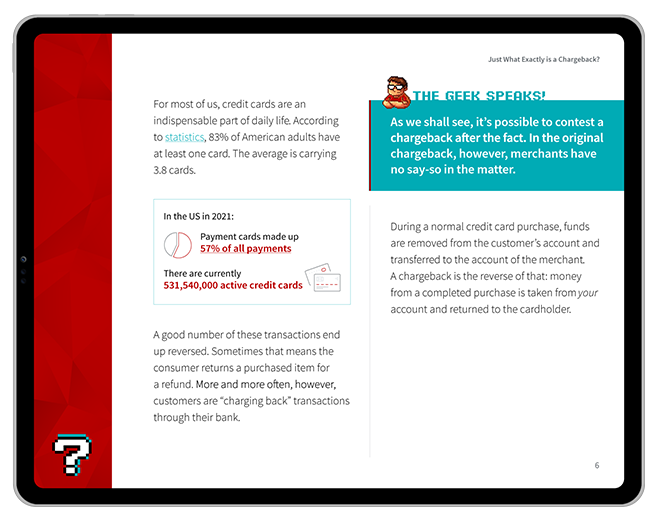Examining Shopping Cart Abandonment, Plus 10 Strategies to Satisfy Customers & Recover Orders
Picture this: a customer visits the same product page multiple times. They select their desired specs, add their item to their cart… but then vanish halfway through the checkout process.
What went wrong?
As a merchant, you're probably very familiar with this situation. After all, about 75% of all online orders are abandoned before completion. That translated to a shocking $705 billion in revenue lost by US retailers in 2021 alone.
What could cause a well-intentioned shopper to cancel a purchase at the last second? Most importantly, how can you tackle this problem and recover your sales? Let's explore some solutions together.
Recommended reading
- Prime Day 2024: How to Avoid Chargebacks on the Big Day
- Top 15 Customer Returns Reasons in 2024 & How to Avoid Them
- Online Shopping vs In-Store Shopping: the Future of Retail?
- What is a Return Customer Rate? How to Calculate Your RCR
- eCommerce Order Tracking: Provide the Best CX Possible
- How “Super Apps” May Help Better Serve Your Customers
What is Shopping Cart Abandonment?
- Shopping Cart Abandonment
Shopping cart abandonment is a term used in eCommerce referring to when cardholders place items in their cart but fail to complete a purchase.
[noun]/shä • ping • kärt • ə • ban • dən • mənt/An abandoned shopping cart occurs when a shopper selects and adds an item to their cart but never finishes the purchasing process. For whatever reason, they liked your product enough to select it from your listings but just couldn’t seem to cross that final threshold to a full sale.
There are a variety of factors that could lead consumers to abandon shopping carts. It could be that the buyer is simply doing some comparative shopping and never intended to continue on through checkout. Or, it might be because of a faulty mobile app interface, shipping costs, or even hidden fees. We’ll get into some of these details a little later.
How Big of a Problem is Shopping Cart Abandonment?
In short: it’s big.
To start, knowing the devices which the consumer uses matters. Understanding how customers access your shop can help you determine best practices to improve your user experience and decrease the likelihood of abandoned shopping carts.
Although smartphones are now the most frequently used devices for browsing, sales are still more likely to come through desktops. You can try and boost mobile conversions, though, by making your mobile platform appealing and easy to use and by offering features that streamline mobile checkout.
It’s also important to know why customers abandon shopping carts. Take a look at the figures below:
A lot of shopping cart abandonment occurs before customers even make it to checkout. One of the best ways to snag those sales is to give shoppers a reason to finalize their purchase. Delivering popups and special offers targeted at “on the fence” shoppers is one method that may encourage a customer to complete a purchase. You can also use targeted emails to try and recapture abandoned sales.
Again, by paying close attention to the stats, you can better steer your business practices away from pitfalls that could impact future customers. In fact, you can increase conversion rates by 30% by optimizing your site with simple tweaks. We’ll get into that more later, though.
Why Do Buyers Abandon Purchases?
So, we can see that most buyers who abandon shopping carts don’t have a specific intent to buy. But, what about those that do?
| Reason for Abandoning Past Transaction | % of respondents |
| Shipping, taxes, and other additional fees were too high | 61% |
| The site mandated creating an account | 35% |
| Checkout process was too long or overly complicated | 27% |
| Couldn’t calculate the final order cost up-front | 24% |
| Website crashed/had other errors | 22% |
| Site didn’t seem trustworthy | 18% |
| Delivery timeframe was too long | 16% |
| Unsatisfactory return policy | 10% |
| Not enough payment method options | 8% |
| Payment card was declined | 5% |
There are two consistent themes among customers’ complaints here: transparency and usability. You may believe that your platform is easy to use and that all information is explained clearly. There’s no guarantee that your customers see it the same way, though.
In eCommerce, there is always the possibility of unintentional mistakes, oversights, or inefficiencies buried in your process. Here are just a few of the most common reasons why customers with purchase intent decide to abandon orders:
5 Common Issues at the Point of Checkout
We can reduce most claims down to five common issues that cause shopping cart abandonment. From there, we can offer tips about how to resolve those problems:
High cart abandonment rates can also be indirectly tied to an increase in chargebacks.
Cargebacks happen when a customer disputes a charge on their credit card, resulting in a forced refund conducted at the bank level. If a customer is unclear about your product, pricing, or shipping fees, they might make a purchase without fully understanding the terms. Naturally, confusion like this can result in chargebacks when customers believe they were misled or incorrectly charged.
Shopping Cart Abandonment: Prevention is the Best Medicine
As explained above, shopping cart abandonment has a direct influence on your revenue generation, customer satisfaction, and overall business growth. This is why it’s absolutely essential to get the issue under control as soon as possible.
Concentrating on minimizing cart abandonment provides several benefits. It can help you:
Addressing shopping cart abandonment effectively can lead to numerous benefits for merchants. You can see increased sales, enhanced customer satisfaction, and a stronger brand reputation.
Where should you start, though? Below, we’ve outlined a few key practices you can adopt today to cut down on card abandonment and grow your customer base without risking fraud and chargebacks.
10 Tips & Practices to Reduce Shopping Cart Abandonment
When it comes to mitigating digital shopping cart abandonment, the key is to have a plan.
Now that we’ve discussed why customers may abandon shopping carts on your site, let’s dive into some strategies to prevent the phenomenon from happening in the future:
#1 | Simplify the Checkout Process
You should strive to evaluate your current checkout procedure. Carefully review the process from end to end, identify any unnecessary steps, and simplify the process to make it more user-friendly. This includes reducing the number of form fields and providing clear instructions at every stage of the process.
#2 | Authenticate Buyers Based on Risk
There are benefits to requesting that buyers create an account before completing a purchase. However, many of your customers will prefer to complete purchases without creating an account.
Including a guest checkout option will provide shoppers with the means to choose the payment method that suits them best. You can implement this option in their eCommerce platform to make the process more seamless.
#3 | Be Transparent
Always display your fees, taxes, and shipping costs upfront on your product pages or in the cart summary. This can be done by using real-time shipping calculators or providing estimated costs based on customer location. As mentioned above, leaving things up to your customer’s imagination can end badly for your business in the form of chargebacks and other unpleasant surprises.
#4 | Provide Multiple Payment Options
Integrate multiple payment options into your eCommerce platform to offer different payment methods. Consider other options beside just credit and debit cards; PayPal, digital wallets like Apple Pay and Google Pay, BNPL, and even cryptocurrencies are all increasingly popular options.
#5 | Optimize for Mobile
You can ensure that your eCommerce platform and website are mobile-friendly by using responsive design and optimizing the user interface for touchscreens.
#6 | Offer Live Chat Support
You should consider including live chat software on your website to provide real-time support during the checkout process. This helps address any questions or concerns customers may have before making a purchase. When live support is not available, dynamic chatbots can help fill the gap and address simple, common questions.
#7 | Retarget & Remarket
Setting up retargeting and remarketing campaigns using tools like Google Ads, Facebook Ads, or email marketing platforms is a great idea. These campaigns should be personalized to remind customers of the items they left in their carts.
Far from alienating customers, these targeted remarketing campaigns are appreciated by most buyers. Shoppers love a customized experience.
#8 | Display Trust Badges
You want to quickly — yet subtly — signal to buyers that your site is safe and secure. Displaying trust badges is a good way to accomplish this.
Display SSL certificates, payment security logos, and PCI compliance icons on your website, particularly during the checkout process. Thiswill help to reassure customers that their data is secure.
#9 | Clarify Your Return Policy
Besides being good for business, clear return policies also help to prevent cases of return fraud and other unpleasant circumstances. Transparent return policies should be easily accessible on your website. They should also communicate the policy during the checkout process and ensure that it is flexible and customer-friendly.
#10 | Declutter Checkout
You don’t need customers to fill long, painstakingly drawn-out forms at checkout. Try to eliminate redundant fields wherever possible. You can simplify the process in a few ways, including:
- Auto-Populating Addresses: There’s no need for a customer to enter a street address, city, state, and ZIP code. Once a person starts typing, a drop-down can provide address options using data from Google.
- Address Matching: Customers’ billing and shipping addresses are often the same. Why make them enter that information twice? Give the option to simply check a box for the same address.
- Numeric Keypads: Keying a 16-digit number using tiny mobile keyboard buttons is tedious and error-prone. Replace the keyboard at the payment information stage with a numeric keypad.
Need Help?
As we’ve demonstrated, taking charge of your checkout process can save you loads of time and money. That said, providing excellent customer service is perhaps the most important thing to note when trying to eliminate shopping cart abandonment.
Not sure where to start? You’re not alone.
If you’re experiencing a high number of abandoned shopping carts, there is usually a reason. While many consumers might simply be browsing, that still leaves a hefty percentage of abandoned carts that you can convert to sales with a few tweaks.
There is no need to reinvent your business to fight the dreaded abandoned cart syndrome. Nothing you do will get rid of the problem entirely. But, you can increase your final sales figures and improve your bottom line by paying close attention to your user experience, and taking a more holistic, comprehensive approach.
Mitigating online shopping cart abandonment is just one part of an overall strategy. Click below to learn more about creating a comprehensive strategy to grow your revenue and your business.
FAQs
Why is cart abandonment bad?
An abandoned shopping cart occurs when a shopper selects and adds an item to their cart but never finishes the purchasing process. For whatever reason, they liked your product enough to select it from your listings but just couldn’t seem to cross that final threshold to a full sale.
How do you fix a shopping cart abandonment?
As we see, most shopping cart abandonment occurs before customers even make it to checkout. So, one of the best ways to snag that final sale is to give shoppers a reason to finalize their purchase. “On the fence” popups and special offers are just two methods that may encourage a customer to complete a purchase. You can also use targeted emails to try and recapture abandoned sales.
What is a good abandonment rate for a cart?
Since the average cart abandonment rates rest between 69-75%, anything below that can be considered “good.” However, you can increase conversion rates by 30% by optimizing your site with simple tweaks.
What is the average cart abandonment rate in 2023?
The global average rate of cart abandonment is 75.6%, as of this writing.
What makes people abandon shopping carts online?
There are a variety of factors that could lead consumers to abandon shopping carts. It could be that the buyer is simply doing some comparative shopping and never intended to continue on through checkout. Or, it might be because of a faulty mobile app interface, shipping costs, or even hidden fees.














